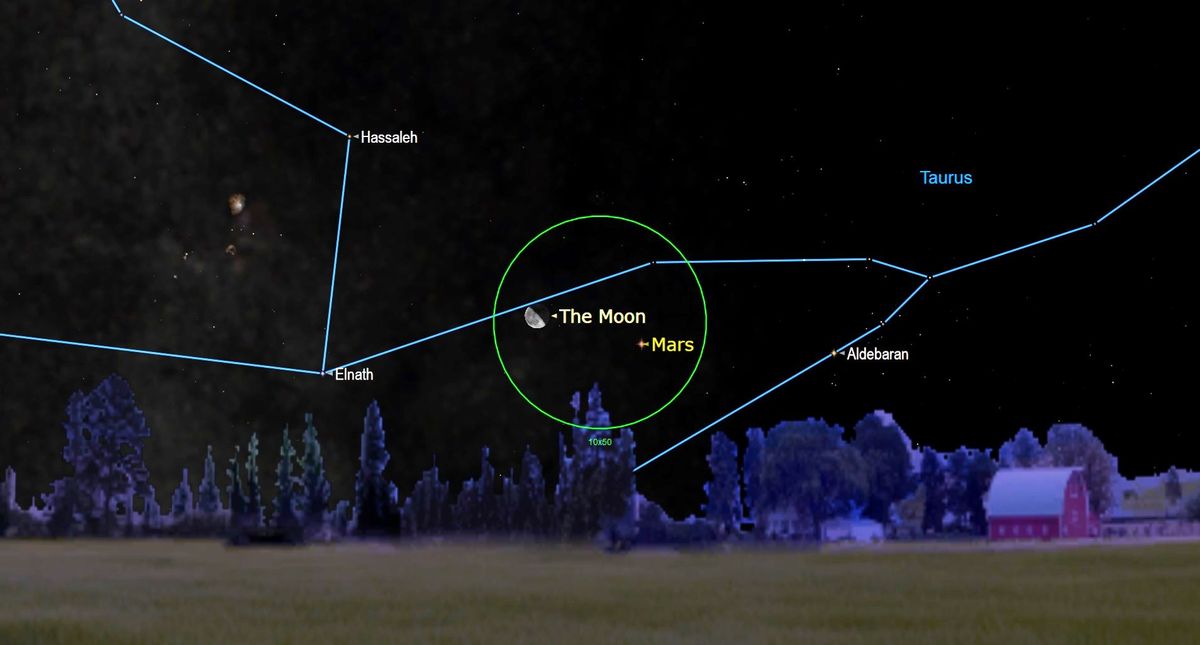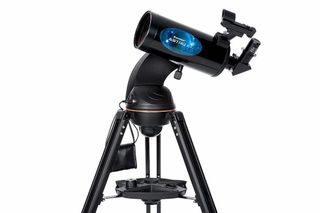See the conjunction of the moon and Mars tonight (Sept. 16)

Mars and the moon will make a close approach to each other in the sky tonight (Sept. 16), and here's what you can expect to see.
The waning gibbous moon will pass a mere three degrees to the north of the Red Planet. This close encounter, or conjunction, occurs at 9:43 p.m. EDT (01:43 GMT on Sept. 17), when the two objects share the same right ascension, according to In-the-Sky.org.
The pair will be visible to viewers in the northeast starting around 11:34 p.m. EDT (0334 GMT on Sept. 17), when they reach an altitude of seven degrees above the eastern horizon. The moon and Mars will remain visible in the early morning sky.
Related: Night sky, September 2022: What you can see tonight [maps]
The moon and Mars will reach their highest point of 70 degrees above the southern horizon at 06:06 a.m. EDT on Sept. 17 (1006 GMT). (A clenched fist at arm's length corresponds to about ten degrees). They will be briefly visible until the dawn breaks around 6:18 a.m. EDT (1018 GMT) and the soft glow of the rising sun outshines the pair.

Looking for a telescope to see Mars and the moon? We recommend the Celestron Astro Fi 102as the top pick in our best beginner's telescope guide.
The moon is currently shining at a magnitude of -12.0, while Mars shines with a magnitude of -0.4. (The brighter the object, the lower the magnitude.) Despite their close encounter, the pair will be too widely separated to fit within the field of view of a telescope. However, they will be visible to the naked eye or through a pair of binoculars.
Both Mars and the moon are visible in the constellation Taurus. Following their close encounter, the pair will appear to separate as the night progresses.
Get the Space.com Newsletter
Breaking space news, the latest updates on rocket launches, skywatching events and more!
The close approach between Mars and the moon is also known as an appulse. Given the moon's orbit of Earth, this astronomical arrangement tends to recur on a monthly basis, as the moon passes the same planets at a similar phase each month.
You can check out our guides for the best binoculars and the best telescopes to spot the moon and Mars in the night sky. If you're hoping to capture a good photo of the pair, check out our guide for photographing the moon, along with our recommendations for the best cameras for astrophotography and best lenses for astrophotography.
Editor's Note: If you snap a photo of the moon near Mars and would like to share it with Space.com's readers, send your photo(s), comments, and your name and location to spacephotos@space.com.
Follow Samantha Mathewson on Twitter @Sam_Ashley13. Follow us on Twitter @Spacedotcomor on Facebook.
Join our Space Forums to keep talking space on the latest missions, night sky and more! And if you have a news tip, correction or comment, let us know at: community@space.com.

Samantha Mathewson joined Space.com as an intern in the summer of 2016. She received a B.A. in Journalism and Environmental Science at the University of New Haven, in Connecticut. Previously, her work has been published in Nature World News. When not writing or reading about science, Samantha enjoys traveling to new places and taking photos! You can follow her on Twitter @Sam_Ashley13.











